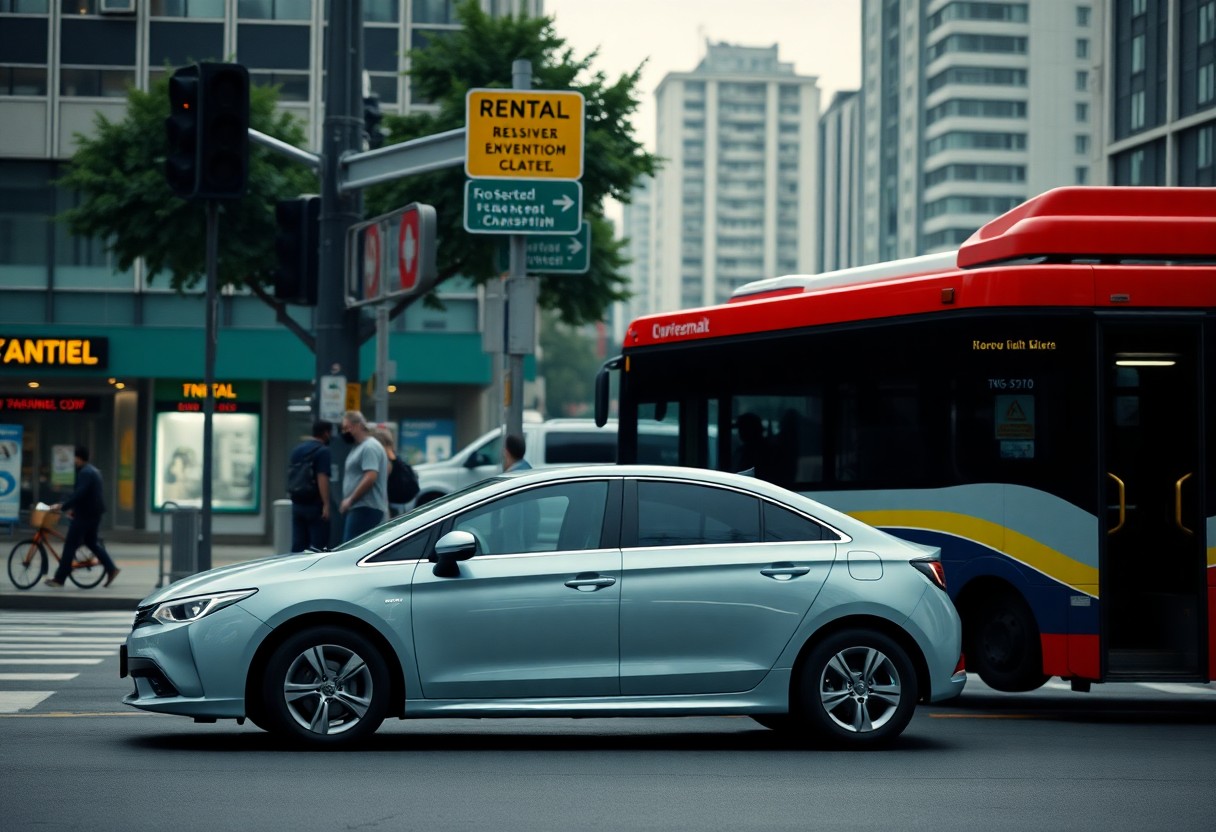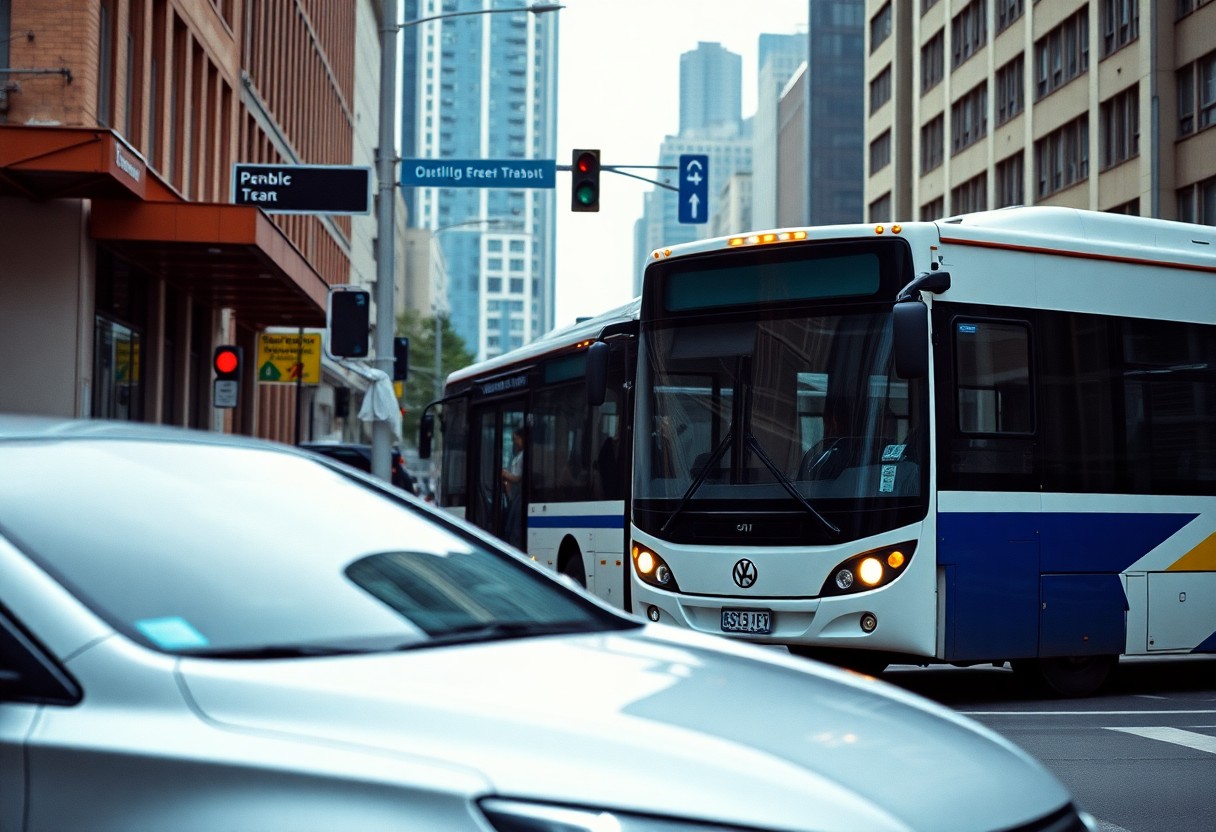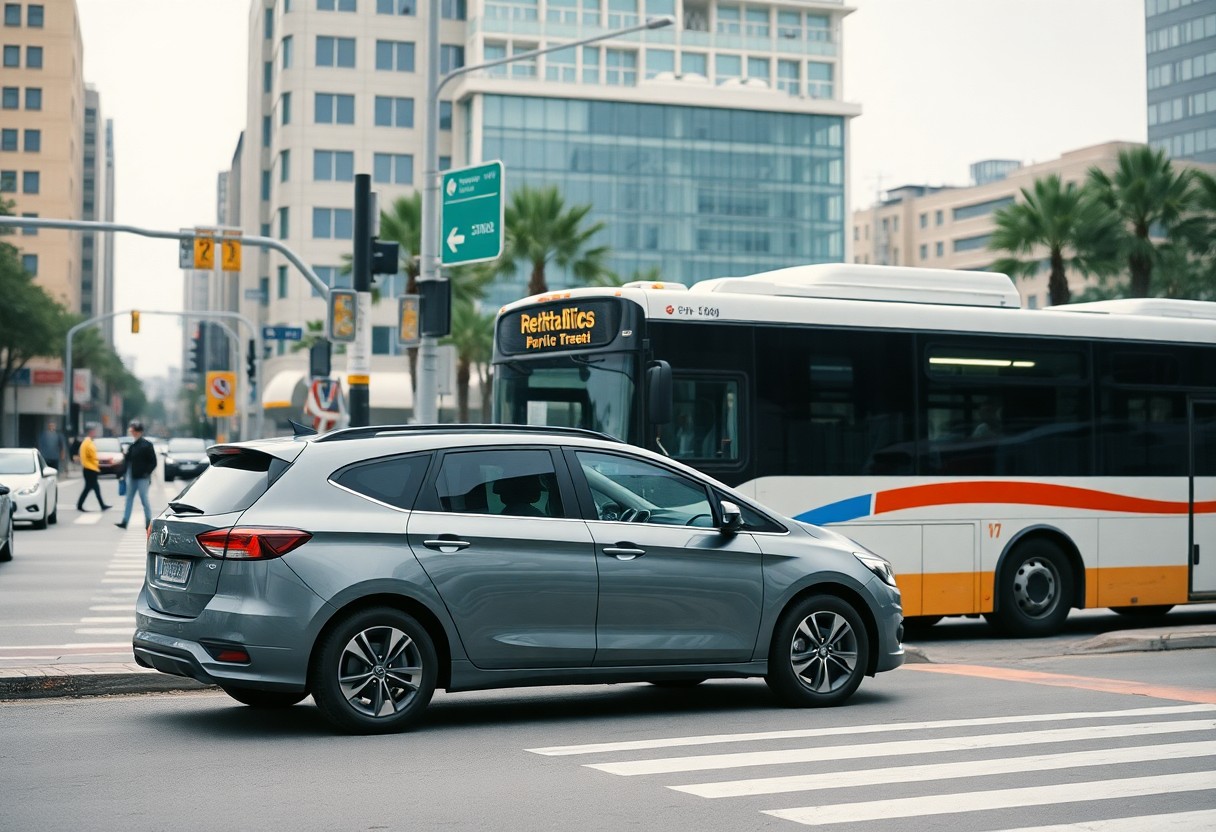As you embark on your travel journey, the rising costs of travel expenses and the increasing value of personal time make it essential to choose the right transportation method. The decision between the freedom and flexibility of a rental car and the cost-effectiveness of public transportation can greatly affect both your budget and overall travel experience. When planning your next vacation, consider factors such as your travel destination, itinerary, and the number of companions you’ll have. This detailed guide will help you navigate key aspects of transportation choices, from understanding hidden rental fees to evaluating the convenience of public transport, ensuring that your decision aligns with your specific travel needs.
Unlock Your Travel Potential with a Rental Car Experience
The independence that comes with renting a vehicle opens up a plethora of travel opportunities that aren’t easily accessible through other means. By choosing a rental car, you gain complete control over your travel itinerary, allowing you to explore hidden gems beyond the usual tourist hotspots. Research has shown that 73% of travelers opt for rental cars because they appreciate the ability to change their plans spontaneously, making this choice particularly attractive for those who value the freedom to customize their adventures.
Weighing the Pros and Cons of Renting a Car
Once you get behind the wheel of your rental vehicle, you may enjoy significant advantages along with a few limitations. The ability to explore remote areas and adjust your timeline seamlessly is a major perk; however, it’s also crucial to be aware of potential parking fees that can range from $25 to $45 daily in busy urban areas, along with possible navigation difficulties. Your rental car becomes a personal retreat during your travels, yet you will need to handle fuel costs and navigate traffic conditions independently, which can add an extra layer of responsibility to your journey.
Spotting Hidden Charges and Discovering Unexpected Savings
While the allure of a rental car brings certain costs, it can also lead to unexpected savings. Although initial rental costs may seem high, it’s important to keep in mind that group travel can often yield better value compared to buying individual public transport tickets. Recent data indicates that families of four or more frequently save 15-20% on transportation expenses when choosing a rental vehicle over public transit options, making it a financially savvy choice for larger groups.
Delving deeper into the financial aspects, it is essential to consider additional factors. Insurance costs can increase your rental fees by $15-30 per day, but many credit card companies offer rental car protection, which can save you money. Furthermore, the fuel efficiency of modern rental cars (averaging around 30-35 MPG) helps decrease overall travel expenses, while the convenience of direct travel from your accommodation to your destination can save precious vacation time.

Mastering the Essentials of Public Transportation
If you choose to navigate your destination via public transportation, gaining a thorough understanding of the system is your first critical step. Most major cities now feature intuitive transit apps that simplify route planning, provide real-time arrival updates, and facilitate ticket purchases. It is vital to familiarize yourself with the local transit network, including bus routes, subway lines, and transfer stations. Research indicates that 55% of urban travelers save up to 30 minutes per journey by utilizing these transit applications, making them invaluable tools for efficient travel.
Mastering the Urban Public Transit Navigation
Every city’s public transportation system operates with its own unique patterns and schedules. Be prepared to encounter peak travel hours, typically occurring between 7-9 AM and 4-6 PM, when ridership is at its highest. Therefore, your navigation strategy should incorporate alternative routes, as delays can frequently happen during these busy times. Factoring in an extra 15-20 minutes for essential appointments will ensure timely arrivals and reduce the stress of unexpected delays.
Embracing the Social Experience of Public Transit
Beyond the logistical considerations, using public transportation provides a unique social experience. You will share your journey with both locals and fellow travelers, allowing you to immerse yourself in the authentic vibe of the city. While this can occasionally lead to uncomfortable situations, it also offers valuable cultural insights. Studies suggest that frequent public transit riders develop improved social adaptability skills as they navigate diverse social environments, enhancing their overall travel experience.
At times, your journey may involve navigating various social dynamics on public transport. From the lively energy of rush hour to the serene quietness of late-night rides, each time frame offers a distinct atmosphere. Safety is particularly important during off-peak hours, so it is crucial to remain aware and choose well-lit, populated areas while waiting for transit. Most public transit systems now include 24/7 security monitoring and emergency communication systems to help ensure your safety while traveling.
Analyzing the Financial Considerations of Your Travel Options
When evaluating your travel choices, budgeting plays a pivotal role in deciding between rental cars and public transportation. Your transportation expenses can vary significantly based on factors such as your destination, the length of your trip, and the number of travelers in your party. While rental cars offer greater flexibility, they come with hidden costs like insurance, fuel, and parking fees. Conversely, public transit may initially seem more affordable, but costs can accumulate quickly with frequent daily rides.
Breaking Down the True Costs of Car Rentals
Conducting a financial assessment of car rentals reveals expenses that extend beyond the daily rental rate. It’s essential to budget for $30-50 daily for insurance, average fuel costs ranging from $40-60 per tank, and potential parking fees that can reach per day in major cities. Consequently, your total daily travel expenses could range from $100-$200, making renting a car a more economical option, especially when traveling in a group.
Understanding the Cost Structure of Public Transit Tickets
Initially, public transportation may appear to be the more budget-friendly option. For instance, in cities like New York, where average metro cards cost $34 for unlimited weekly rides, substantial savings can be achieved compared to rental car expenses. Additionally, you can avoid extra costs associated with parking and fuel, making public transit particularly advantageous for solo travelers.
Cost comparisons show that weekly public transportation passes in many large metropolitan areas typically range from $25-40, offering unlimited rides. However, for families or groups of four or more, the total cost of multiple transit passes might exceed the cost of a rental car, particularly when planning extensive daily outings or trips to areas with limited public transport options.

Streamlining Your Travel Schedule for Maximum Efficiency
As you choose between rental cars and public transport, prioritizing your schedule is crucial. A rental car enables direct, point-to-point travel, potentially saving you up to 40% of your travel time compared to public transportation. Your time is a precious resource – while public transport may seem cheaper, it’s essential to consider the time spent waiting, transferring, and walking to and from stations, which can add up significantly.
Enjoy the Flexibility of Spontaneous Scheduling
When it comes to time management, a rental car provides complete freedom over your departure and arrival times. You are not bound by rigid transit schedules, allowing for spontaneous detours or last-minute changes to your itinerary. This freedom is invaluable, especially when plans shift unexpectedly or when you discover hidden attractions during your journey.
Confronting the Challenges of Public Transport Schedules
One major challenge of public transportation lies in its reliance on set schedules. Studies reveal that 23% of urban buses do not run on time during peak hours, which can disrupt your travel plans. Your journey may require multiple transfers, and delays in one service can create a domino effect, affecting your entire itinerary.
To effectively navigate public transport, it’s advisable to factor in extra buffer time. Transport professionals recommend adding 15-20 minutes to your estimated travel time for each connection. During busy periods or special events, consider doubling these buffers, as they can significantly influence the amount of time you have available for your planned activities.
Assessing the Environmental Consequences of Your Travel Choices
When considering your transportation options, it is vital to acknowledge the environmental impact of your decisions. A single-occupancy rental car produces approximately 404 grams of CO2 per mile, while public transportation can reduce emissions by up to 45% per passenger. The choice between renting a car and utilizing public transport has a lasting environmental footprint that should factor into your decision-making process.
Comprehending Your Carbon Footprint
Every mile you travel has a direct correlation with climate change and environmental degradation. A fully-loaded bus can replace the need for 50 cars on the road, significantly curbing overall carbon emissions. Your journey in a rental vehicle can generate 4-5 times more CO2 than an equivalent trip via bus or train, although selecting electric or hybrid rental options can help reduce this impact.
Exploring Sustainable Transportation Alternatives
Upon reaching your destination, you may find a variety of eco-friendly transportation options available. Electric car rentals can decrease your carbon footprint by up to 50% compared to traditional gas-powered vehicles. Additionally, many cities now offer hybrid buses and electric trams, making public transport an increasingly sustainable choice.
Your environmental impact can vary significantly based on your transportation decisions. Consider a mixed approach – rent an electric or hybrid vehicle for longer journeys while relying on public transport in congested urban areas. Numerous rental agencies now offer green vehicle options, allowing you to maintain mobility while minimizing your ecological footprint.

Enhancing Your Travel Comfort and Enjoyment
Unlike public transportation, rental cars provide complete control over your comfort preferences. You can easily adjust the climate, seating arrangements, and audio settings to suit your personal tastes, creating an ideal travel environment. This level of customization is particularly beneficial during extreme weather or lengthy trips, where overall comfort can significantly enhance your travel enjoyment.
The Personal Space Advantage of Rental Vehicles
One of the most significant benefits of renting a car is the guaranteed personal space it provides. You will not have to deal with crowded buses or trains, where personal space often shrinks to less than 4 square feet during peak travel times. Your rental car becomes a private oasis, allowing you to maintain control over your travel environment and who shares it with you.
Experiencing Varied Comfort Levels in Public Transportation
Comfort levels on public transit can greatly fluctuate due to various uncontrollable factors. During peak hours, you might find yourself crammed in with 150-200 passengers in a single subway car, significantly diminishing your comfort. The experience often requires standing for extended periods, particularly during the typical 38-minute commute in major metropolitan regions.
During a standard rush-hour scenario on public transport, you may encounter noise levels reaching 80-90 decibels, comparable to heavy city traffic. These conditions, combined with unpredictable delays and service interruptions, can make your journey less enjoyable and more taxing, especially when traveling with luggage or in a group.
Choosing the Best Transportation Option for Your Travel Needs
Ultimately, your decision between renting a car and utilizing public transport should be guided by your specific travel needs. If you value flexibility and comfort while traveling with family or friends, a rental car generally provides the best overall value, even considering the higher upfront costs. Conversely, public transportation is often ideal for solo travelers on a budget who are comfortable sticking to well-established routes in urban settings. It’s essential to evaluate factors such as your destination, group size, planned activities, and budget. By carefully balancing these elements against your personal priorities, you can select the transportation option that aligns perfectly with your travel objectives.
The Article: Renting a Car vs. Public Transport: Which is Best for Your Trip? appeared first on https://rentacar24.org/
The Article Renting a Car vs. Public Transport: Choose the Best Option for You Was Found On https://limitsofstrategy.com



You raise some crucial points regarding the decision-making process in choosing transportation for travel. Personally, I’ve found that while the allure of a rental car offers remarkable flexibility and the chance to explore off-the-beaten-path destinations, it doesn’t come without its challenges. For instance, navigating unfamiliar traffic patterns or dealing with parking can sometimes overshadow the freedom a vehicle provides.
You raise some intriguing points about the complexities of choosing transportation when traveling. As someone who has relied on both rental cars and public transportation during various trips, I’ve experienced the pros and cons of each method firsthand. While the flexibility of a rental car often allows for spontaneous detours and accessing remote attractions, I’ve found that public transport can sometimes enhance the cultural experience of a destination. For instance, navigating a busy subway system often connects you more with local life and offers a glimpse into the city’s rhythm that you might miss when isolated in a car.
I totally relate to the struggle of picking the right transportation when traveling. Rentals definitely offer that sweet sense of freedom—like being able to hit off-the-beaten-path spots or changing plans on a whim. I had an amazing experience last summer road-tripping through California’s coast, where public transport wouldn’t have done justice. That said, navigating rental fees can feel like a minefield sometimes, especially with insurance upsells and fuel policies that can really add to the bottom line.
I totally get where you’re coming from with the rental freedom vibe. Road-tripping along California’s coast sounds incredible. There’s something about having your own wheels that allows you to explore those hidden gems and spontaneous detours that public transport just can’t match. Last year, I did a similar trip along the Pacific Northwest, and I was blown away by how many stunning spots we stumbled upon just by taking a different exit off the highway.
I totally get that vibe of wanting to explore freely; I came across this piece that dives into some unique adventures in Belize that really embrace that spirit of off-the-beaten-path travel.
‘Unique Adventures in Belize Off the Beaten Path’
https://mkpitstop.co.uk/unique-adventures-in-belize-off-the-beaten-path/.
I totally relate to that feeling of freedom that comes with having your own vehicle to explore. There’s just something so liberating about veering off the main route and discovering those unexpected gems that most people miss. Your Pacific Northwest trip sounds amazing; I’ve heard the coastline there is breathtaking. It’s often the little moments—like the smell of the ocean air or an impromptu picnic with a stunning view—that really stick with you.
It sounds like you had an amazing time in the Pacific Northwest. I think there’s something unique about the sense of freedom that comes with having your own vehicle on a road trip. Being able to pop off the highway for an unexpected view or a local eatery really adds to the experience, doesn’t it? Those spontaneous moments often turn out to be the highlights of a journey.
It’s fascinating to consider the trade-offs between rental cars and public transportation, especially as travel trends evolve. Personally, I find that the choice often hinges on the destination and the experiences I want to have. For instance, during a recent trip to the Pacific Northwest, I opted for a rental car, and it transformed the adventure. The freedom to explore hidden gems, like quaint coastal towns and secluded hiking trails, was unmatched. Public transport might have worked for a city-centered trip, but being able to change plans on a whim made that experience truly memorable.
It’s interesting how the choice between rental cars and public transportation can really shape the experience of a trip. I can relate to your experience in the Pacific Northwest—it’s remarkable how having the freedom to explore on your terms can lead to unexpected adventures. There’s something about discovering those hidden gems, like a quiet beach or a local eatery that you wouldn’t find in a guidebook, that makes the journey feel more personal.
That’s an interesting perspective; I recently came across an article that highlights some great Easter holiday destinations in the UK, which made me think about how the right transport choice can really shape those experiences.
‘Easter Holiday Destinations to Discover Across the UK’
https://mkpitstop.co.uk/easter-holiday-destinations-to-discover-across-the-uk/.
You’ve raised some really important points about how the way we travel influences our experiences. The contrast between rental cars and public transportation is a fascinating one, especially in such diverse and beautiful areas like the Pacific Northwest. One moment you might be winding through towering forests or alongside rugged coastlines in a car, feeling a sense of freedom as you stop where you want. The next, you could be navigating public transit, where the journey itself often opens doors to unexpected conversations and encounters with locals who can share those hidden gems—places that don’t always make it into the glossy travel guides.
You make a solid point about how our mode of transportation can really influence the overall vibe of a trip. It’s such a game-changer, isn’t it? When I think about some of my favorite moments traveling, a lot of them come from that spontaneous feeling of pulling over to check out a quirky roadside attraction or finding a little café with the best pastries. It’s just not the same hopping on a packed bus or train, even if public transit has its perks too.
You’ve really hit on something with the way transportation can shape the whole vibe of a trip. It’s almost like the difference between having a blank canvas and a pre-painted one; with a rental car, you can decide your own path. I remember driving along the coast of the Pacific Northwest, windows down, coast and mountains rolling by. It’s those spontaneous stops at a local food truck or a secluded trail that add layers to the experience—places that are often overlooked when you stick to public transport or guided tours.